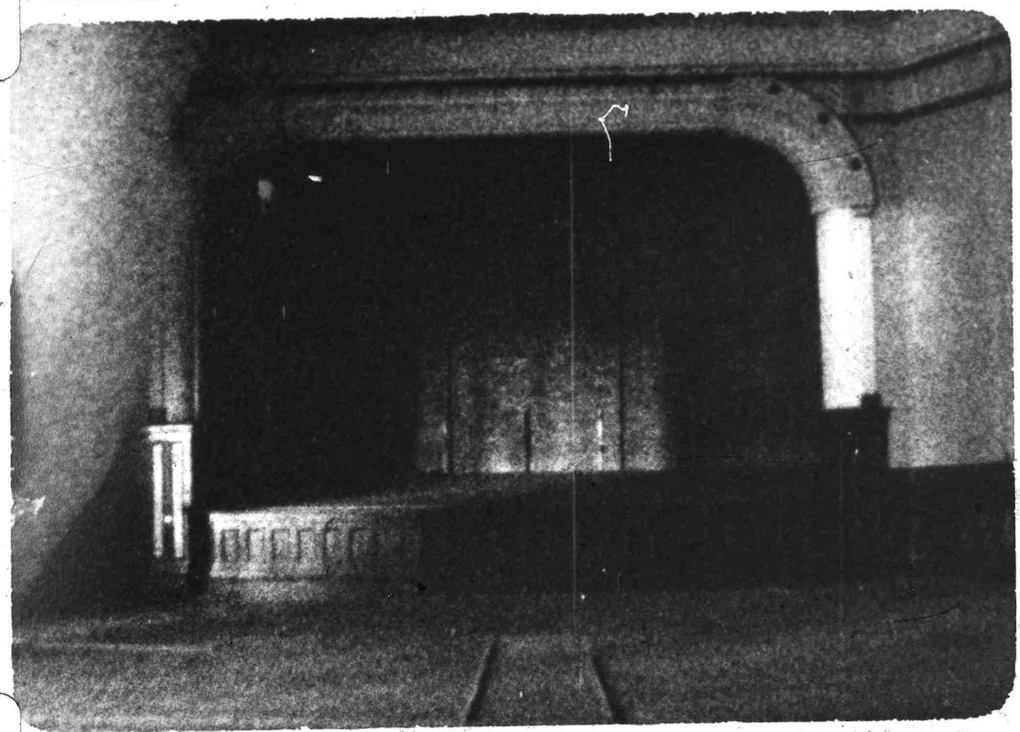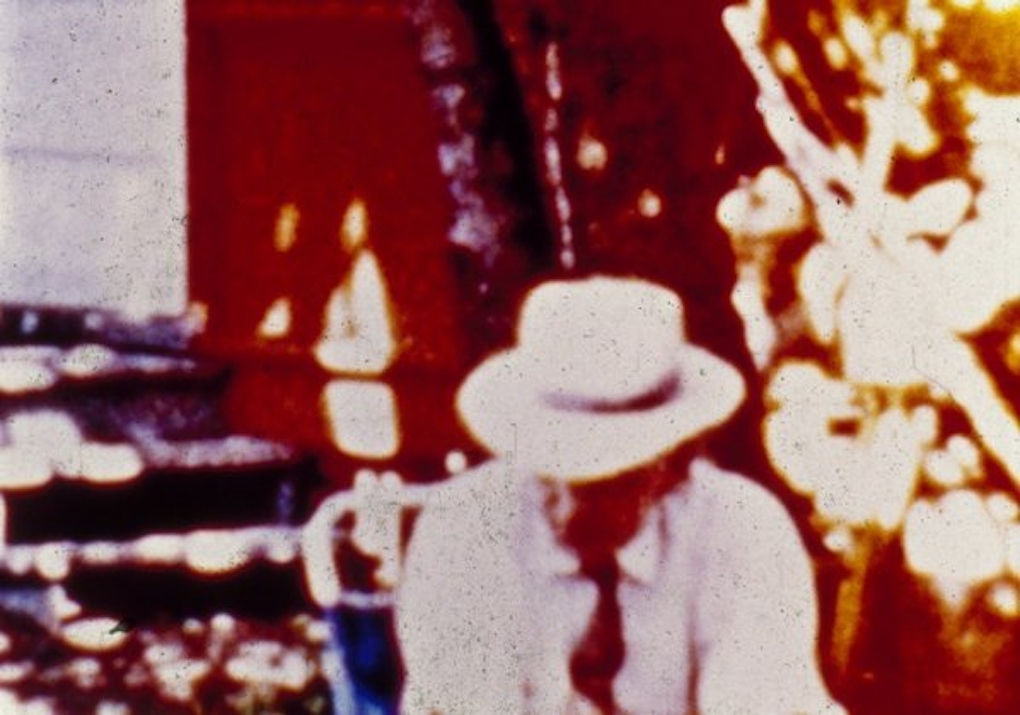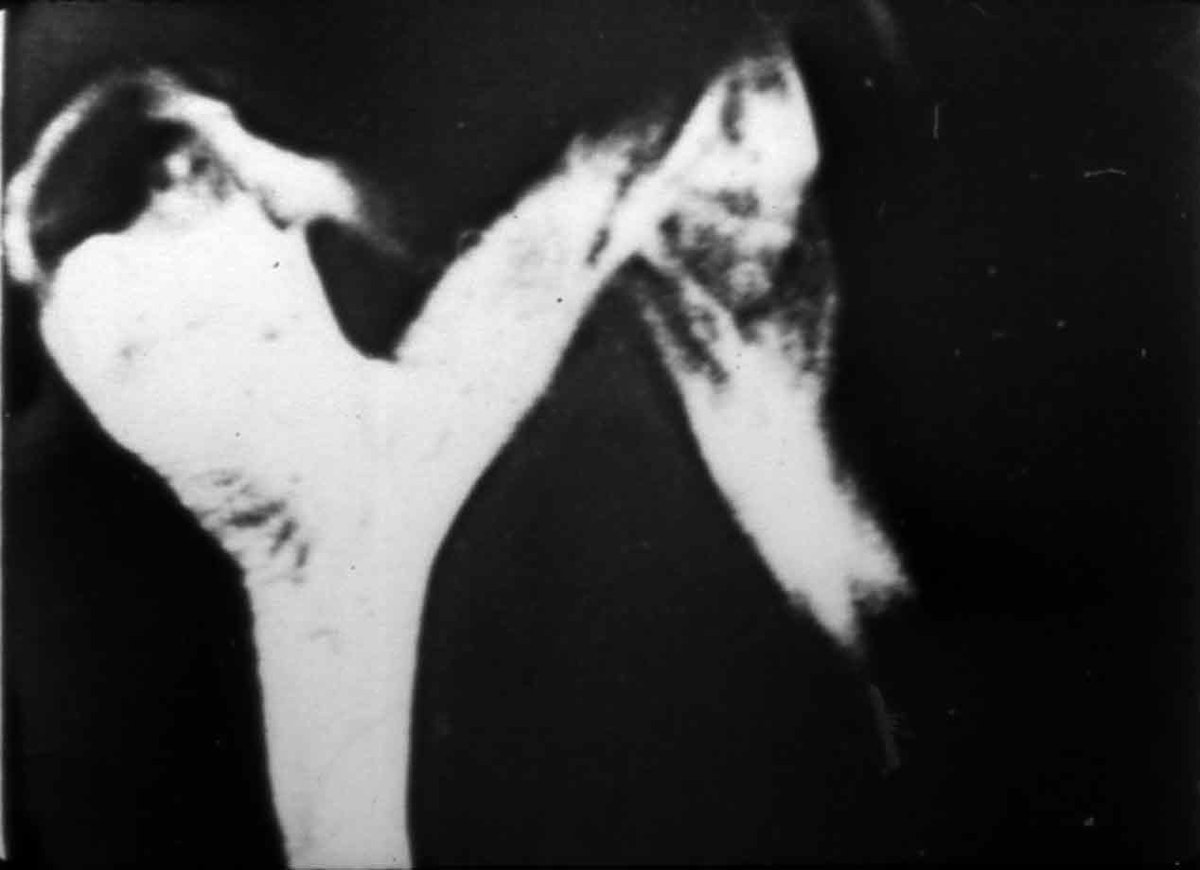During the 1930s, according to filmmaker Solomon Nagler, the Eastman Kodak Company undertook extensive surveys to match the hues of their new Kodachrome film stock with the colours people remembered from their dreams.
True or apocryphal, the story carries a certain mythic resonance. Cinema has often been regarded as a dreamlike medium and, even as digital becomes the norm in mainstream cinema, the Kodachrome home movie remains a standard way of conveying the reveries of childhood memory. The relationship between celluloid technology and states of consciousness is also central to Nagler’s own work, as became evident at a March 20 screening presented by CIRCUIT at the Robert Heald Gallery in Wellington.
Hailing from Winnipeg, Canada, Solomon Nagler began making films in the 1990s. He has strong connections with the renowned Winnipeg Film Group (whose members include Guy Maddin, John Paizs and John Condie), and was their 2004 artist-in-residence. His works have screened at festivals and cinémathèques across North America and Europe, including the Lincoln Center, New York, and the Centre Pompidou in Paris. Earlier this year he ventured down under, collaborating with fellow Canadian Alexandre Larose for Situated Cinema, an installation at Artspace in Sydney, before completing a short residency at AUT in Auckland.
A prolific creator of short films, Nagler’s work has covered a range of subject matter, from the Canadian prairie landscape to Jewish mysticism. He also has a deep interest in the aesthetic and philosophical significance of celluloid film. In a 2006 essay, The cinematic consequences of the materiality of celluloid, Nagler suggests that since film’s industrial use has now all but ceased, it can be reborn as a kind of twenty-first century craft medium. The basic requirement of having to develop reels by hand, for instance, opens up a new frontier of “materialistic cinema” for artistic investigation:
When we eliminate the industrial/scientific controls of our material, we invest in a precarious gamble. We are forced to give up all expectations of possible results.... Having no absolute guarantee of our photographic harvests forces us to work with the results of our endeavours, rather than within a preordained studio formula... the shot-by-shot story-boarding of the film’s inception.(1)
Celluloid’s unpredictability also yields an ethical dividend: it circumvents the eschatological seductions of “invariability” and “absolute clarity”, as offered by digital media. The return to celluloid becomes almost an anti-fascist gesture.(2) Chemical decomposition, fading, scratches, colour shifts and graininess caused by optical transfers: such unplanned phenomena imply that nothing is invariable, nothing absolutely clear, that physical fragility is in fact a pathway to beauty. Indeed, these assumptions call into question the familiar archival rhetoric around “preservation”, suggesting that “image loss” may well be our aesthetic gain.
The first two films screened in Wellington, both 16mm silent works taken from the recent Situated Cinema collaboration, demonstrate the kinds of poetic discoveries which have grown out of this manifesto. Each looks into a different kind of cinematic past. Situated Cinema—Film one (2013) surveys the interior of a vast derelict theatre, an example of the abandoned movie-palaces which are apparently scattered across post-multiplex Canada. Through churning clouds of black-and-white grain, images of the lofty ceiling, gaping stage and grim architraves appear like glimpses of a lost temple, underlining the building’s past function as a site of communal ritual. Ghostly patches of light sometimes dance across the frame, these “projections of past projections” (as Nagler described them) the serendipitous result of each frame exposure being hand-estimated and the overall strip reprinted multiple times.(3)

Still from Situated Cinema-Film one (2013) Solomon Nagler and Alexandre Larose
In Situated Cinema—Film two (2013), Nagler and Larose turn to the private histories encapsulated in 8mm home movies, drawing on the resources of their own family archives. The scratching, fading and other attenuations of the source material show, in Nagler’s words, “the way time expresses itself” through celluloid. Accentuated via multiple reprinting on Ektachrome (a colour stock which can be hand-processed), these effects could be seen as metaphors for the elusive visual crumbling and distillations of internal memory. The work’s effectiveness also relies on the filmmakers stripping out the most familiar home movie subject-matter(4), leaving behind fragments—a woman seated in a window’s pale light, people ascending steps in funereal clothes, laughter at a party, a darkened corridor, a young girl dancing in a front-yard—which succeed in evoking the surprising randomness of past remembrance.
Following on from the Situated Cinema selections, Nagler programmed another four 16mm works in roughly reverse chronological order, thus allowing the audience members to play the role of critical detectives: spotting evolving interests and strategies, and appreciating the ongoing refinement of his approach.
Two black-and-white films explored the borderland between representation and abstraction opened up by materialistic cinema practice. In Notes on Gesture (2007), the movements of Canadian dancers Emilie Tremblay and Mary Ann Lacey become just that, “notes”, the merest glyphs of body shapes amongst the processing marks, granular forms and frame strobe of the film strip. Here, human physicality and celluloid materiality collide in a strangely sensuous way. Another collaboration with Alexandre Larose, j. (2009), uses extreme abstraction to express (seemingly) a sense of unwanted memory or suppressed trauma. The images involve a child, man and woman—and perhaps a hand roasting in flames—but the harsh contrast levels render faces and backgrounds into viscous blobs. Any hint of narrative context is, like the title, strictly abbreviated. But a feeling of sadness lingered afterwards.

Still from Situated Cinema-Film two (2013) Solomon Nagler and Alexandre Larose
The screening concluded with two of Nagler’s early colour films, perhaps/We (2003) and The sex of self-hatred (2004), from a trilogy about Jewish history and identity. It was interesting to consider how these foreshadow his later and arguably more refined works. The content here seems both more esoteric and more explicit: perhaps/We features Hebrew inter-titles of which I—and probably most of the Wellington audience—would not understand a word; while The sex of self-hatred includes touches of erotic grotesquery reminiscent of the paintings of Francis Bacon. Each is more cinematically busy, too, with double exposures, layered soundtracks and dense montages. Yet there is also an obvious concern with filmic materiality and one can identify species of imagery (e.g., cavernous ruined spaces, irksome abstract blotches) recycled in the later films. Conceivably, such works could have led Nagler down many artistic paths. The programme presented in Wellington suggested that he has followed a tendency toward subtraction over the last ten years, paring away surplus expressivity toward ever more concentrated meanings. Perhaps the demise of film’s industrial use, over that period, made focused investigation of celluloid the more fascinating, more critical direction to take.
